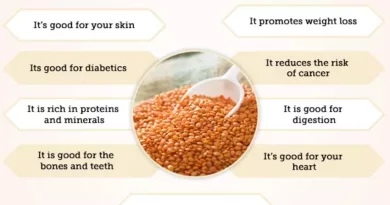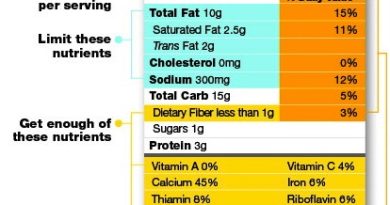The Nutrition Solution
The Nutrition Solution, Harold J Kristal, D.D.S. and James M. Haig, N.C., 2002: North Atlantic Books, Berkeley, CA, 285 pages
The Nutrition Solution is probably the most important book in the field of metabolic typing. There are other biochemical typing books, one of which is Eat Right for Your (Blood) Type. The reason why The Nutrition Solution is the best metabolic typing book is that it combines four different metabolic types and provides both a strong theoretical basis and substantial empirical evidence for the four types.
Most of the audience reading this review may never have heard of metabolic typing. Therefore there needs to be some background information presented before continuing with the critique of The Nutrition Solution.
Kristal’s book is influenced heavily by the other major work on metabolic typing —The Metabolic Typing Diet. The author of this book, William Wolcott, originally believed that there were two metabolic types, fast and slow oxidizers. He was in turn influenced in this opinion by George Watson, Ph.D., who wrote about the different rates of food oxidation in the book Nutrition and Your Mind: the Psychochemical Response.
It was much later that Kristal found out about the theory of Wolcott, who suggested that there were four metabolic types, not two. In Wolcott’s opinion, there were two main metabolizing systems, the oxidative and the autonomic. The oxidative system is the one that is described in all biochemistry books as the standard system of breaking down food for energy. It is well-defined and relatively uncontroversial.
Oxygen combines with molecules made of carbon and hydrogen to release energy. A similar reaction occurs in a gasoline engine to release energy from the chemical octane. Some people oxidize foods faster than normal, they are called fast oxidizers. Some oxidize foods at a slower rate and are termed slow oxidizers.
The autonomic system is responsible for the neural-based regulation of metabolism via hormones and neurotransmitters. Although the study of the autonomic system is also a “conventional” science, which has been taught in the Bio-Medical field for decades, it is newer and thus is somewhat less defined than the oxidative system.
The two branches of the autonomic system are sympathetic and parasympathetic. The sympathetic branch is most often stimulatory (ex. increasing heart rate), while the parasympathetic branch is mostly inhibitory (ex. decreasing heart rate). Both the oxidative and autonomic systems interact with each other, giving feedback to each other to keep the body’s overall metabolism running smoothly.
Every person has both oxidative and autonomic systems, but they are not always in balance. Often one will dominate the other in certain instances, including digestion and assimilation of food. Francis Pottenger Sr. conducted many autonomic experiments on animals around the start of the 20th century and concluded that individual mammals (including humans) most often have one of the autonomic branches dominating the other. For this theory, he is generally recognized as the father of autonomic typing.
There is a second variable in the metabolic equation: blood pH. Normally, arterial blood pH ranges from 7.37 to 7.43, with an average of 7.40. The more acidic the blood is, the lower the pH; the more alkaline the blood is, the higher the pH. A completely neutral pH is 7.00, so all blood pH is slightly alkaline.
However, if the blood pH falls below 7.40 it can be termed relatively acidic, even though technically it’s still slightly alkaline. Most foods, such as grains and meats, release acids when they are digested. Many vegetables are an exception to this—they are more alkaline.
However, what happens during digestion and what happens to the pH of the blood can be two very different things. For reasons still not completely understood, some foods raise blood pH in some people, and some foods lower blood pH in others. The same food may raise blood pH in one person and lower it in another.
This is important, for two reasons. First, blood pH needs to be kept in a narrow range for various enzymes and other constituents of the bloodstream to function optimally. If the blood pH goes too high or too low, there can be serious problems with a person’s health, including seizures, coma, and even death.
Second, a person’s blood pH may be within the clinical range of 7.37 to 7.43, but they may be close to one of those extremes, and eating the “wrong” foods may push them further away from the optimal pH of 7.40. The good news is that once a person knows and understands their metabolic type, they can plan a nutrition program to help balance their blood pH towards the optimal level.
The two metabolic types with higher blood pH are slow oxidizers and parasympathetic. The two metabolic types with lower blood pH are the fast oxidizers and the sympathetic ones. The slow oxidizers and sympathetic tend to do better on complex carbohydrates, while the fast oxidizers and parasympathetic often do better with more fat and protein in their diets.
Why would this be? As far as oxidation is concerned, the answer is relatively straightforward. Carbohydrates are used as fuel first, followed by fat, and then protein. Therefore, carbohydrates are the fastest to be used. If someone has a faster metabolism, they will burn up carbohydrates faster than they should. Blood sugar, energy, and emotional swings may be the result, as well as a swing in blood pH (lower).
Protein and fat burning happens more slowly and thus slows down the metabolism of the fast oxidizers. Slow oxidizers burn carbohydrates at a more normal pace, but too much fat and protein in the diet will slow down their metabolism too much. They may feel bloated and nauseated after eating a meal rich in protein and fat. Their blood pH may also swing the wrong way as well (higher).
As for parasympathetic and sympathetic, the established scientific picture is not clear for why they also have blood pH changes that are the opposite of the oxidative types. Kristal admits in the book that he does not know why this is, but the empirical evidence is clear that this is the case. Parasympathetic tend to have faster metabolisms, like the fast oxidizers, and thus do better with fatter and protein in their diet.
Their alkaline blood pH is lowered by protein intake towards 7.40. Sympathetics are like slow oxidizers in that they have slower metabolisms. They do better on carbohydrates, which raises their relatively acidic blood pH towards the normal 7.40. Some people are internally balanced, with a blood pH at or very near 7.40, and their pH may not be affected much, if at all, by eating different foods.
Kristal’s colleague Wolcott terms these people mixed types. Kristal’s method of changing blood pH is a glucose-potassium challenge to patients (according to him, potassium stimulates autonomics).
In reality, most people are never tested for arterial blood pH, since it is not a routine test, and has the potential to cause infection. The blood is taken deep inside the body from an artery, not from a vein close to the outer skin as with most blood tests.
Much of the work that was done on blood pH and food happened several decades ago, and the results are used as a model to theoretically predict what metabolic type one is. In other words, a metabolic typist can take the symptoms the client has and works backward to determine what their physical state in theory should be internal.
A healthcare provider can also take venous blood and determine its pH. The pH of venous blood is slightly lower than arterial blood, between 7.32 and 7.38—so the optimal venous blood pH would be 7.35 instead of 7.40. When performed carefully, venous blood pH is normally as accurate as arterial blood pH.
One thing that’s questionable in the book is when Kristal repeatedly states the optimal venous blood pH as 7.46. He certainly knows that 7.46 is a high value, whether it’s via conventional medical definition or the holistic opinion. A blood pH of 7.46 is high even for arterial blood, but it is especially high, possibly even dangerously high for venous blood.
What he may be saying is that the optimal blood pH is 7.46 at room temperature (25oC, or 77oF), when the blood samples are taken from a warm body and then tested in the laboratory. pH only changes +/- 0.0144 for every degree of centigrade (C) change, but remember that even such a small change can have large consequences.
The human body is normally at 37oC (99oF), which is 12oC more than room temperature. pH falls with a temperature rise, and vice-versa. So, 12 x 0.0144 = 0.173 rise in pH units, since the temperature has fallen. As noted previously, the average venous blood pH is 7.35, so 7.35 + 0.173 = pH of 7.52 at room temperature.
It may have been that Kristal’s samples were tested somewhere between room temperature and body temperature, say 30oC (86oF). This would correspond to an average venous blood pH of 7.45 (7.35 + 0.101), which correlates fairly well with his “optimal” pH of 7.46. Whatever the case, he should have mentioned in the book what temperature the participants’ blood samples were tested at. A pH of 7.46 is not healthy at body temperature; readers must know and understand this.
There are many case histories, as is usual for a health-related book that describes more alternative methods of treatment. The self-typing questionnaire consists of 30 questions. The different diets for the carbohydrate (group I) and protein/fat (group II) metabolisms are very detailed.
However, there are not any references for why most foods belong to which group. Carbohydrates belong in group I and most proteins/fats belong in group II, but some many fruits and vegetables are placed in either group.
Even more complicated is that some foods from the same family of vegetables (for example, broccoli and cauliflower) are recommended for different groups, although the foods themselves are highly related to each other. It would have been good for Kristal to reference all of this information, even if it took a second book to accomplish this.
The reviewer does admit that he developed an aversion to broccoli with no aversion to cauliflower before reading that cauliflower is acceptable for his group II diet (broccoli is not). This is what is called anecdotal information (without statistical evidence), and anecdotal information is what holistic concepts rely heavily on, for better or worse.
The diet menus, as are very common in books like this, are pretty good, because they are all shown on two pages. This makes it easy for the reader to mix and match different foods on the menu without having to flip through dozens of pages to find a good meal combination for themselves.
Not everyone is going to like every food combination, and Kristal does a decent job of not patronizing the reader by going into detail about cooking/ingredients for every meal. He gives a satisfactory overview of nutritional theories for juices, food combinations, soups, etc. Kristal recommends over 25% protein for the group II (protein/fat) types, which may be hard on the kidneys of certain people.
If you do follow his advice, be sure to drink plenty of quality (spring) water, and notify your physician about the amount of protein you intend to eat. Kristal also briefly explains the reactions to different foods based on an individual’s blood type. This is probably as much information on blood type as anyone needs.
As mentioned earlier, there is a third group (III) that is balanced between carbohydrates (group I) and protein/fat (group II). Many researchers believe that a food-balanced group of people is the healthiest; however, that may depend directly on the blood pH, which in theory should be balanced as well. In reality, many variables cannot be accounted for in classifying some people as “balanced”.
The Group III people may be equally imbalanced towards carbohydrates and protein/fat, and yet come out balanced on the self-test. Also, some group III people may be truly balanced between carbohydrates and protein/fat, but still may not have a balanced blood pH. If a group I type eats carbohydrates, in theory, their blood pH should be more balanced, and the same goes for group II type eating more protein and fat.
However, this does not mean that a group III individual would need exactly 50% carbohydrates and 50% protein/fat to stay balanced. Everyone is different metabolically, and testing on paper into a group does not reflect their blood pH, and balancing blood pH itself may not necessarily help every problem they have.
An important part of the book involves what types should take what kinds, amounts, and ratios of supplements. Group I types do better on magnesium and straight vitamin C (ascorbic acid); group II types do better on calcium and calcium ascorbate (buffered vitamin C).
There is a good section on hormones, which is simple enough to be understood by most laypersons. Interestingly, Kristal does not recommend supplements unless he feels that an individual needs them. In other words, he attempts to let the proper diet for a metabolic type do most of the work in regaining health.
One of the more interesting parts of the book is when Kristal theorizes that the group I types tend to develop the cardiovascular disease when too many simple carbohydrates are ingested, while group II types tend to develop diabetes. He has some compelling statistics from patients to back up this theory.
Also, a group I types are much more prone to cancer for some reason. Could it be that they are eating too much protein and fat for their type? This may be so, but more research is needed. Finally, the reference section is adequate, but it does not contain many reputable articles from scientific journals or textbooks to help legitimize the concept of metabolic typing.
How does this book rate? The Nutrition Solution is very important to the field of nutrition, the bio-medical field, and the general public. This is due to the importance of explaining how metabolism is varied between individuals, and the simplification scheme to type someone metabolically. It cannot be stressed how important this concept is. However, from a strictly scientific point of view, it’s still a concept, at the hypothesis stage.
Several observations in metabolic typing still cannot be explained at the scientific level. Perhaps the most important of these lingering questions is why the same food would cause opposite blood pH reactions in two different people (two different metabolic types).
Until there is a solid understanding of the mechanism for this and other metabolic typing issues, there will not be any widespread acceptance of this emerging field in the Bio-Medical community. Metabolic typing is a work in progress, but this fact should not take anything away from the importance of reading The Nutrition Solution.




